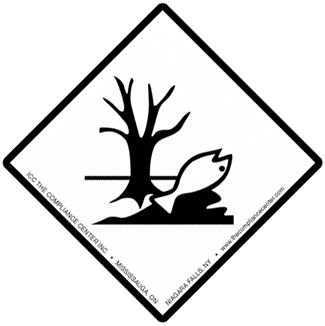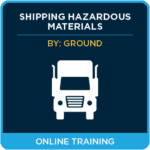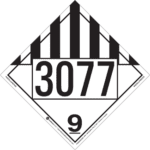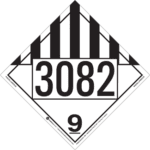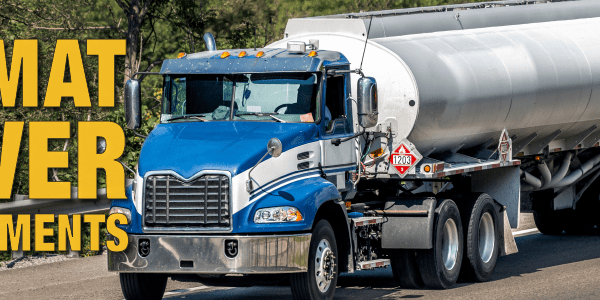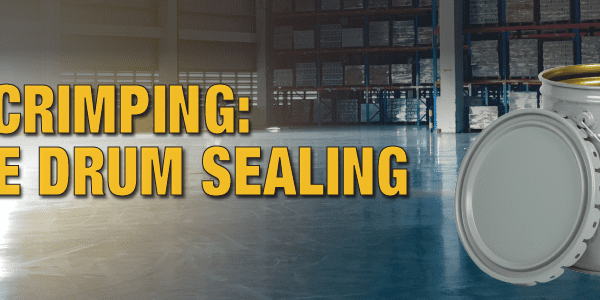This post was originally published in January 2020 and was reviewed in February 2023 to ensure accuracy.
Ever had that feeling where you know you are right but cannot find the proof to back it up? Sadly, I have. Both at work and in my personal life. When it happens during a training class and you are the presenter it is really a bad feeling. Luckily in this case I was able to find it. Granted it took me longer than expected but at least I really was right.
Here’s the story. While training a group in 49CFR, it was time to go over the topics of Hazardous Substances which many call Reportable Quantities (RQ) and Marine Pollutants (MP). We eased into it talking about the Appendices to 172.101. After that we looked at how Appendix A is dedicated to RQ whereas Appendix B is for MP and reviewed the definitions for each in 171.8. We then went into the details of classifying and identifying hazardous materials using each one.
For Hazardous Substances, we discussed how a 5-gallon (~19 L) plastic drum of Acetone not will likely trigger an RQ given the RQ limit per package is 5000 pounds. Even if there were 1000 of these drums in an overpack there still would not be an RQ or hazardous substance designation. After that we looked at how that same 5-gallon drum filled with something like Silver Nitrate which has a 1-pound RQ limit may end up with the additional classification of hazardous substance (RQ).
The same process was repeated using Appendix B and Marine Pollutants. We considered when this Appendix should be checked – transport by vessel or in bulk packagings. After that, we went over how a Severe Marine Pollutant (SMP) is designated by the PP and how it was triggered versus other Marine Pollutants that are not SMP. To round out this part we looked at a few Safety Data Sheets (SDS) and talked about the exception for this Appendix that is found in 171.4.
Now, at this point in class I bring up the UN numbers of UN3082 and UN3077 for Environmentally Hazardous Substances in Class 9 and Packing Group III. It was mentioned these were used when a material doesn’t fit in the other 8 hazard classes but still needs a basic shipping description. For instance, a package contains 12 pounds of Lead. This package now has met and exceeded the hazardous substances or RQ limit, but Lead is not listed as a proper shipping name in the Hazardous Materials Table (HMT). In this case, you would use UN3077. The same situation for Marine Pollutants is possible. If you had more than 10% Acroleic Acid, stabilized in a bulk package or in one going by vessel, it is now a Marine Pollutant. Again, though that material is also not listed in the HMT so UN3082 would be used.
It all made sense to the group until someone asked, where in the 49CFR does it say that is the way you are supposed to do it? In other words, what is the reference that explains you must use UN3077 or UN3082 for Hazardous Substances (RQs) and Marine Pollutants when there is no shipping description in the HMT? Here was my moment. I knew I was right, but where was that explained? I looked at the definitions in 171.8, the description of Class 9 in 173.1401 and even specifics on marks for each.
Turns out it is in the HMT itself. If you look up either of the terms “hazardous substance” or “marine pollutants” in 172.101’s Hazardous Materials table, it sends you to one of those UN numbers. See below for how the table reads. When you look at how the information is listed in column 2, notice some of the text is italicized and some of it isn’t. The words in Roman type (not italics) is the name you must use. As you can see both entries refer a shipper to Environmentally Hazardous Substances, solid or liquid, n.o.s. Just so you know, that notation about the Roman type is in 172.101(c) where the regulation is, explains each column of the table.
|
Symbols
(1) |
Hazardous Materials descriptions and proper shipping names (2) |
Hazard class or Division (3) |
Identification Numbers (4) |
PG
(5) |
|
|
Hazardous substances, liquid or solid, n.o.s., see Environmentally hazardous substances, etc. |
|
|
|
|
|
Marine pollutants, liquid or solid, n.o.s., see Environmentally hazardous substances, liquid or solid, n.o.s. |
|
|
|
Should you ever have a situation like this when working within your own team, with a carrier or freight forwarder, don’t hesitate to reach out to ICC. All of our training courses include a copy of that particular Trainer’s business card with their direct line and email address. If for some reason he or she is out of the office, give our Regulatory Helpdesk at 855-734-5469. It is staffed with other Trainers and Regulatory Specialists who will be able to get you an answer for any regulation – 49CFR, TDG, IATA and IMDG.
If you are in need of training in any of these regulations, visit our website for a list of upcoming courses which are open to the public. You can also order current copies of the regulations form there along with lots of other goodies. You can also call our Customer Service team. In the US the number is 888-442-9628 and for Canada it is 888-977-4834. Best of luck to all you shipper’s out there. We are here to help!
We have all the products, services and training you need to ensure your staff is properly trained and informed.


